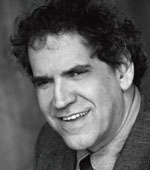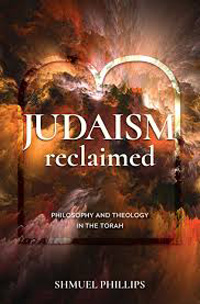 Judaism Reclaimed: Philosophy and Theology in the Torah by Rabbi Shmuel Phillips; Mosaica Press (2019). ISBN:19463-51784; 632 pages.
Judaism Reclaimed: Philosophy and Theology in the Torah by Rabbi Shmuel Phillips; Mosaica Press (2019). ISBN:19463-51784; 632 pages.
By Rabbi Dr. Michael Leo Samuel

 CHULA VISTA, California — Judaism Reclaimed: Philosophy and Theology in the Torah is an interesting book written by R. Shmuel Phillips who attempts to create a philosophical midrash of the text using primarily two important Judaic thinkers: Maimonides and Samson Raphael Hirsch, the founder of Modern Orthodoxy. R. Phillips also uses other famous Judaic thinkers to examine a host of theological and philosophical discussions on a medley of issues ranging from God and the Holocaust to biblical criticism. Readers should find the issues raised worth reading and debating.
CHULA VISTA, California — Judaism Reclaimed: Philosophy and Theology in the Torah is an interesting book written by R. Shmuel Phillips who attempts to create a philosophical midrash of the text using primarily two important Judaic thinkers: Maimonides and Samson Raphael Hirsch, the founder of Modern Orthodoxy. R. Phillips also uses other famous Judaic thinkers to examine a host of theological and philosophical discussions on a medley of issues ranging from God and the Holocaust to biblical criticism. Readers should find the issues raised worth reading and debating.
Permit me to provide some background to the origin of this style of approach.
Historically, the concept of philosophical method to interpreting Torah is nothing new. Philo of Alexandria became the first Judaic philosopher to integrate his understanding of Torah to the themes of Greek philosophy; he often utilized Plato, Aristotle, and the Stoics in applying the ethical lessons of the Torah to real life situations. In my series of books on Philo, I demonstrated how Philo’s ideas found expression in many of the most famous midrashic traditions. The vision that inspired Philo also inspired other brilliant Judaic thinkers in the medieval era, as seen in the expositions of Saadia Gaon, Judah Halevi, R. Bahya Ibn Pakuda, and especially Maimonides. These scholars viewed the synthesis of Greek and Judaic thought as potentially compatible.
In Rabbi Phillips’ stimulating book, he examines a variety of scriptural themes through the prism of Jewish philosophy. While most books written on the weekly Torah portion makes contextual observations on the biblical text, Judaism Reclaimed: Philosophy and Theology in the Torah in particular attempts to graft the ideas of Maimonides, S.R. Hirsch, and other notable Torah thinkers and creates a lively discussion for readers to creatively—but philosophically—engage the biblical text.
In many instances the author attempts to clarify what appears to be conflicting interpretations that a thinker like Maimonides presents to the thoughtful reader. Rabbinical tradition often tries to harmonize different strands of thought in the works of the Talmud, the commentaries, as well as the rabbinical legal codes. This reviewer has often found this approach wanting.
In his exposition on the beginning of Leviticus, Phillips discusses some of Maimonides’ conflicting views concerning the value of animal sacrifices. Citing the view from the Guide for the Perplexed, Phillips notes that Maimonides conceded that animal sacrifice helped serve to wean the Israelites away from paganism. And frankly, a modern reader can readily perceive that animal sacrifice proved to be a great improvement over human sacrifice, as seen among the inhabitants of Carthage and among certain peoples of the Canaanites. Ramban took issue with Maimonides rational approach and insisted that the sacrificial cult contained a deeper mystical and ethical symbolism where the individual surrenders his entire body and soul to God.
As Abarbanel observed, Maimonides’ view of sacrifice in the Guide does not completely explain the symbolism of the Cain and Abel narrative in Genesis 4, which existed before paganism started. Phillips might have considered a different answer to this conundrum, one which will be appearing in my forthcoming, Maimonides’ Hidden Commentary on Leviticus. Maimonides wrote:
“From the words, כָּל־חֵלֶב לַיְיָ ‘All fat is the Lord’s,’ we can deduce the following principle. Whenever you give an offering to God, always make sure that it comes only from the finest and best. The house of prayer that you build must be more beautiful than your dwelling. The same principle applies to other areas of your interpersonal life. When feeding the poor, be sure to supply him with only the finest foods on your table. When clothing the naked, give him from the very finest of wardrobes. Always give from the very best of all your possessions for the Torah also states,וְהֶבֶל הֵבִיא גַם־הוּא מִבְּכֹרוֹת צֹאנוֹ וּמֵחֶלְבֵהֶן “and Abel for his part brought of the firstlings of his flock, their fat portions’ (Gen. 4:4).The same rule ought to apply to every conceivable offering, , as the verse says, כָּל־חֵלֶב לַיְיָ ‘All fat is the Lord’s’ (Lev. 3:16).[1]
It is unfortunate Ramban and Abarbanel overlooked Maimonides’ valuable insight—one that appears in the Mishneh Torah and not the Guide. Phillips stakes this famous discussion and cites Abarbanel, who shows how many of the midrashic texts support Maimonides’ overall approach. But the main problem facing Maimonides occurs in the Mishneh Torah, where he envisions a time when the sacrificial cult in the Third Temple will someday be resumed in the Messianic era.
I was interested to see Rabbi Phillips’ discussion of anthropomorphism in his book, for this topic is central in my new commentary in the Maimonides’ Hidden Torah Commentary series. It is always fun to see how other people approach a given topic—especially one that is foundational in Maimonides’ writings. Rabbi Phillips takes issue with Professor Marc Shapiro, who contends many of the rabbis since the rabbinical era believe that God is an anthropomorphic Deity—a view that Maimonides fought mightily in his Guide and Mishneh Torah. Rabbi Phillips contends that the medieval rabbis never subscribed to an anthropomorphic deity. In support of his position, he cited the works of R. Bahya Ibn Pakuda, R. Hai Gaon, and Saadia Gaon and several other early thinkers. He also cited the Targum Onkelos’ approach to eliminating anthropomorphism in his Aramaic translation of the biblical text.
This is where I think Phillips may be only partially correct. Not every rabbi of Late Antiquity was a philosopher. Some communities even in the Middle Ages believed that God could appear in a human form—certainly when speaking about prophecy. The irony here is that Maimonides’ himself actually believed this perspective is not without scriptural support.
Consider:
*How are we to interpret the numerous scriptural expressions indicating anthropomorphism? Consider the following examples: “Under His feet” (Exodus. 24:10); “written by the finger of God” (Exodus 31:18), “God’s hand” (Exodus 9:3), “in the sight of the Lord” (Genesis 38:7), “God’s ears” (Numbers 11:1), and the like? The answer is simple. Human thought is dependent upon corporeal imagery for knowledge, for “The Torah speaks in the language of humankind—hence these metaphorical descriptions through an idiom …. As an illustration of this concept, one prophet says that he saw the Holy Blessed One, clothed in snow white (Daniel 7:9).
·*Another prophet envisions God coming with crimson garments from Batzra (Isaiah 63:1). Moses, our teacher, envisioned Him at the Red Sea as a mighty man who waged war. At Mount Sinai, he saw Him as the leader of a congregation wrapped in a tallit. This shows that He has no image or form. The above-mentioned examples are merely expressions of prophetic vision and imagery—and the truth of the matter is that it is not something that can be easily grasped or understood by human thought. It is regarding this thought the Book of Job tells us, Can you find the comprehension of God? Can you find the ultimate of the Almighty? (Job 11:7).[2]
Clearly, in the language of prophecy, anthropomorphism serves as the means through which God speaks to human beings, utilizing images that are familiar to the prophet. I am certain Moshe Taku held a nearly identical point of view.
Phillips’ citation of the Onkelos regarding anthropomorphism is absolutely correct; the early Sages did not want the masses to assume God actually possessed a human form as the Greeks and Romans believed of their deities. Oddly enough, many Roman historians accused both the Jews and later the Christians of being “atheists” since they did not believe in a God that possessed a human form. Therefore, as much as I like Shapiro’s book, I must stand with Phillips; position here.
Judaism Reclaimed: Philosophy and Theology in the Torah brings up many controversial topics, and the reader will probably agree with many of his points while differing with the author on other views he expressed.
In the final analysis, a good book ought to make a reader think. As Leo Tolstoy was fond of saying, “I have found that a story leaves a deeper impression when it is impossible to tell which side the author is on.” In other words, we may never be able to resolve the questions this book raises, but we will have a great time trying to figure out our own answers.
This certainly applies to Rabbi Phillips’ Judaism reclaimed: Philosophy and Theology in the Torah. This book ought to produce some great conversations into the weekly Torah portion. It is full of great discussions and it has become one of my favorite books for studying the parsha every Shabbat.
I give the book a 5* rating.
NOTES:
[1] MT Hilkhot Isurei HaMizbach 7:11.
[2] MT, Hilkhot Yesodei HaTorah 1:9
*
Rabbi Michael Leo Samuel, spiritual leader of Congregation Beth Shalom in Chula Vista, is author of Maimonides’ Hidden Torah Commentary and Rediscovering Philo of Alexandria: A First Century Torah Commentator.